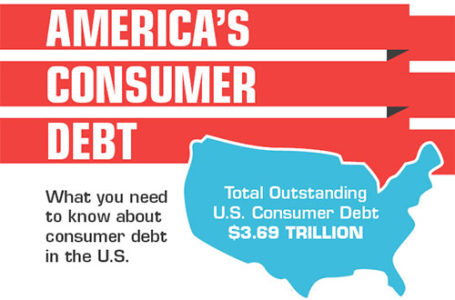Craft a spending plan that helps you avoid credit card debt.
The winter holidays are the most expensive time of year for most consumers. As a result, it’s also the time that people are most likely to run up big balances on their credit cards. If you want to avoid a holiday debt hangover – where you’re left reeling after the holidays when the bills come in – then you need to make a holiday budget that keeps your spending on track.
Setting up a holiday budget
- First, you want to make your gift list. Write down everyone that you think you need to buy for that year. Make sure to include:
- Immediate family
- Extended family
- Neighbors
- Bosses and co-workers
- Friend
- Kids’ teachers and friends
- Next divide your gift list into two parts:
- People who need more expensive, unique gifts
- People who can receive less expensive universal items or handmade gifts
- Now you can set dollar limits for both groups. Decide how much you want to spend on universal gifts or crafts. Then decide as a family how you want to set limits on gifts among your immediate family.
- Then you need to add in all your additional holiday costs. This includes all the other expenses that you need to cover for the holidays, such as:
- Decorations
- Food
- Travel
- Entertaining
- Postage and shipping
- End of year tipping
- Charitable donations
- Write everything down into a holiday spending planner. The planner will have to columns for costs – planned cost and actual cost.
- Finally, total up the planned costs to see how much the holidays will cost you. If the total tab is too high, go back and revisit your expenses to find places to cut back.
- Once you’re happy with the total cost, decide how much you need to save. You want to save a little bit of money out of each paycheck, so you can cover all your holiday costs in cash. Divide the total cost by the number of paychecks there are before the holidays to determine how much you need to set aside out of each.
This worksheet can help you plan your holiday spending »
Holiday spending tips
- Once your list is set, make sure to take it with you everywhere. That way, if you’re out shopping and happen to spot something you need for the holidays you can get it. Your list will also help you avoid buying things on impulse that don’t fit into your holiday budget.
- Only take cash with you when you shop. Shopping with cash helps you avoid overspending and impulse purchases. Credit cards and even debit can give you license to spend on things you haven’t planned in.
- Limit credit card usage to strategic purchases. Things like general reward credit cards aren’t good for holiday spending, because you probably won’t pay off the bills before interest charges completely offset the cash you earn. Only use reward cards for things like travel expenses. If you need to put a big-ticket purchase like an expensive gift on credit, use your credit card with the lowest APR.
- Consider prepaid credit cards or PayPal for online purchases. The holidays are a prime time for ID theft. Prepaid cards and PayPal help you avoid the additional hassle of identity theft on your credit cards or main bank account. You can also load only the money you want to spend, which helps you avoid overspending.
Smart ways to cut holiday costs
- Set up gift swaps and exchanges. Instead of buying gifts for everyone in your office, arrange Secret Santa, White Elephant or a Yankee Gift Swap.
- Don’t buy gifts for yourself or your pets. Pets don’t know it’s the holidays and self-gifting is just another charge you don’t need.
- Buy in bulk or make gift baskets. Buy bulk items for non-immediate family, such as scented candles or digital picture frames, or make gift baskets out of bulk food items.
- Get the kids crafting. Homemade gifts from the kids are great for grandparents. And handmade decorations can be a fun activity for the whole family
- Replace lights instead of strings. Don’t throw away a whole string of lights because one bulb burns out.
- Get a fake tree. The price is comparable to a real tree, but you only have to pay it once.
- Swap decorations with friends or family. Inflatables and other yard art, as well as indoor decorations can be a huge expense. But if you swap, everyone’s yard will look like new.
- Make holiday parties potluck or BYOB. Instead of cooking everything yourself, spread out the costs with your guests. Alcohol can also get pricey, so make your parties BYOB or at least BYOA (bring your own alcohol) and then you provide the mixers.
- Avoid peak flight times and book as early as possible. Holiday flights are expensive, so try flying in early and/or late. Then book your tickets early to avoid price increases as seats get snapped up.
- Fly in/out of alternative airports. Main hub airports are more expensive. If you fly into a suburb or rural airport and drive in, you’ll usually save money.

